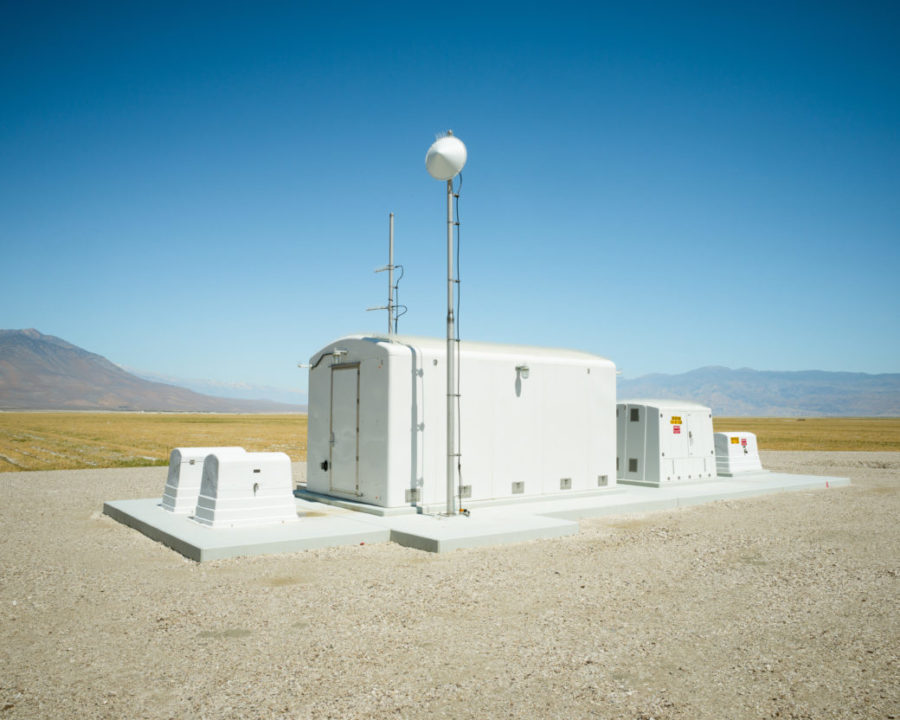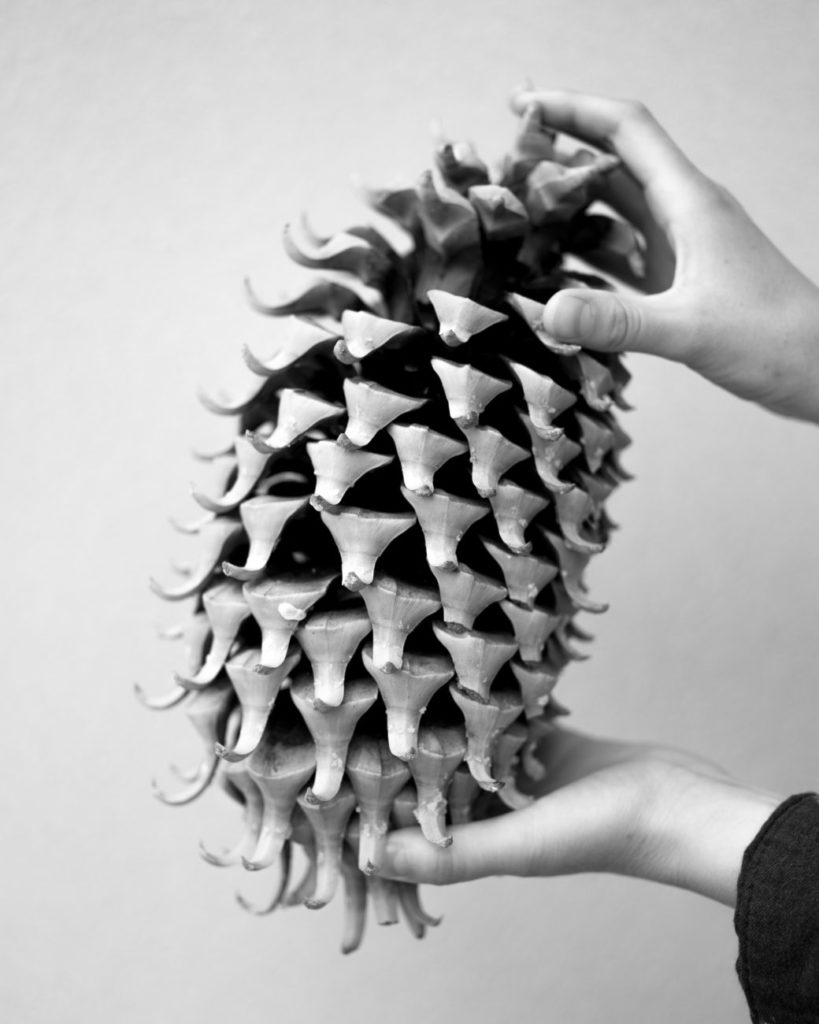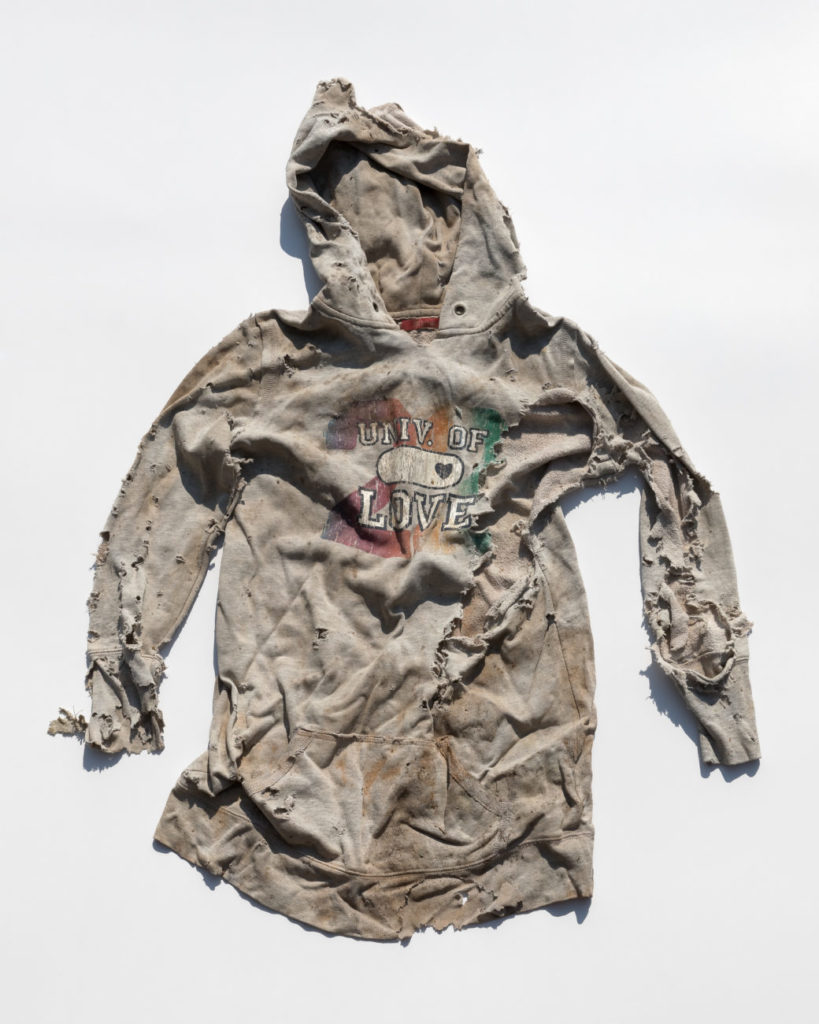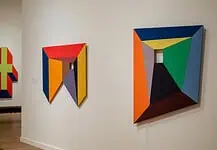For those of us who remember when the Oklahoma Contemporary was little more than a few trendy container boxes stacked on top of each other on an open lot, a tour of the just-launched exhibition Fieldworks: Beyond Measure on the third floor of the newly-opened facility is sure to deliver a pleasant surprise.
Running through April 19, Fieldworks surveys an anthology of objects collected from the vast American Southwest, a fittingly ambitious area to cover and exhibit for the newly minted arts center. From craters to jars, nothing appears to be too big or small for University of Oklahoma Professors Todd Stewart and Robert Bailey.
The exhibition catalogues the contemporary history of the Southwest through the artfully assembled artifacts collected on a road trip. Each object receives a dedicated description and is grouped with other objects to which it is connected by Bailey’s interrogative texts. Each relic seems to float in its own little ecosystem, but taken together, they comprise an archive record of the relationship between the land, its inhabitants, and its traveling guests.
Bailey is an art historian and explores different ways to present the historical record of art.
Stewart is an artist and photographer with an interest in the relationships humans create with the land.
Their collaborative ventures began when Bailey first joined the University of Oklahoma’s faculty and became interested in the prior work of Stewart in road-tripping across the countryside of America. Both have long shared an affinity for the landscapes that raised them. Together, their distinct trainings as art historian and artist serve to complement and supplement each other’s frame of reference and shape a truly rounded composition.
Bailey and Stewart compiled this “archive of assets” over the course of years and many road trips with a diverse array of students. Their interest in road trips and the artistic possibilities was prompted, according to Stewart, by the work of Ed Ruscha, whose journey back to his hometown of Oklahoma City is documented in his book Twentysix Gasoline Stations.
Students who accompany the two on their trips to the Southwest are encouraged to collect items according to their own whims. The collective body of objects in Fieldworks is ultimately a sample size of a vast collection of different perspectives picking across different sites across different timespans. The objects themselves are a mix of found items and photographs, all anchored to some piece of written history.
In creating “fields of association,” the artists seek to continue a hallmark of contemporary art, where “the line between artist and curator has broken down,” according to Bailey.
Both professors engage with the techniques of curation naturally in their work, but credit Pablo Barrera, curator at Oklahoma Contemporary, for his help in arranging and organizing the exhibition. Stewart notes that some of the placement is deliberately ambiguous in order to allow visitors to follow any direction or sequence they see fit, mimicking the paths of life.
The exhibition challenges some of the assumptions of art, both contemporary and Western, in its modes, methods, and subject. The objects speak against the premised state of the West and its deserts as empty. Instead, the landscapes of Fieldworks are “very full and have rich histories.”
In crafting these stories, the exhibition questions the assumed core conditions of the pre-colonial Americas as empty or uninhabited, as well as those of the post-colonial Americas as abandoned by its indigenous peoples. In fact, the aim of the project, if one exists, seems to be an argument for a rethinking of desolate Western landscapes, and instead perceiving the tactile life present in them.
One of the most visible features of Oklahoma art and architecture is the sky, present even in the architecture of the Oklahoma Contemporary main building itself, where light is intentionally refracted to create a transmutable image of grey-blue.
In Fieldworks, however, the work is intimately terrestrial, rejecting in some ways the void of space and re-focusing on the lived and well-worn earth.
This interest is in part motivated, according to Stewart, by the fact that in Western landscapes, “their histories, their narratives are laying right there on the surface of the ground. They’re not covered in densely packed urban centers or they’re not obscured by trees or brush. In a desert, you can walk out into the landscape and have this very tactile experience.”
Each piece speaks to a unique view that each visitor brings with them. The photograph of a Las Vegas hotel whose windows once framed a gunman in the throes of the deadliest mass shooting in U.S. history is sobering. The image of a ratted hoodie spoiled by the harsh desert climate is almost amusing and definitely intriguing.
The texts which align the exhibition, though certainly confusing at first, can be insightful if viewers stick with it and resist the urge of modern habit to quickly consume.
The most compelling object in the collection, however, which every visitor will remember fondly, is a greeting at the entrance to the exhibition: a flat tire.
It was not found. It is instead a relic of one of the artists’ road trips where each van got a flat tire from the same piece of metal. Comical in its banality, the tire serves as a reminder to viewers of what marks are left behind on the land, and what marks the land leaves on you.
In Fieldworks: Beyond Measure, the professors offer a thought-provoking journey at a time when journeys are hard to come by. The exhibition offers the joys and beauties of a road trip without the pain of a family packed into a single car for hours on end.
A visit to the Oklahoma Contemporary is sure to provide fresh insight into the road, the American Southwest, and the art that flows from them.
One floor below Fieldworks is the Oklahoma Contemporary’s first exhibition in the new arts center, Bright Golden Haze, well worth extending your visit.
Tickets to the Oklahoma Contemporary Arts Center’s galleries are free but limited to five per 30-minute interval for the safety of visitors in this time of deep concern about the spread of the coronavirus.
Feature photo: Todd Stewart, LADWP Owens Lake Dust Mitigation Project California, 2016.
Devraat Awasthi is an art reporter for Free Press, a full-time law student at the University of Oklahoma, and is interested in pop culture’s role in public communities.













